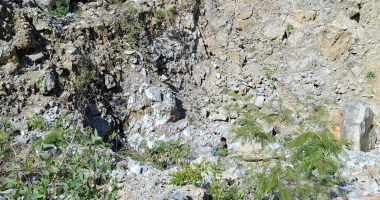The local bourse has just picked up another miner, with Sun Silver Limited (ASX:SS1) the newest silver-gold explorer to list on the ASX.
Key to this company’s story is its success through the IPO process – the company was meant to list in June. However, overwhelming demand from investors during the pre-listing stages now sees the company going live three weeks early in mid-May.
This follows a rapid accumulation of the maximum subscription of $13M Sun Silver can accept to begin trading shares – proof of a very favourable market reception.
Sun Silver has listed on the ASX with 124.9M shares at 20cps, in an IPO that saw Wagtail Capital act as lead manager.
The company’s flagship asset is the Maverick Springs silver gold project in Elko County, Nevada. Maverick Springs boasts an inferred JORC mineral resource of some 292 million ounces (Moz) of silver equivalent, at grades of 72.4g/t silver.
“[Our] resource is globally significant and one of the largest on the ASX,” Sun Silver Executive Director Gerard O’Donovan told The Market Online.
The company’s geological team are well-versed in mining around Nevada and the Carlin trend in particular, over which is located Maverick Springs’s project boundary envelope. And according to O’Donovan, for that area, grades of 72.4g/t are impressive.
Geological faults also occur underground within the permit area, highly sought after targets on any miner’s radar, given the way they ‘capture’ pockets of mineralisation over time.
“Our exploration team who have extensive experience [locally] consider these grades high for the area,” he added.
What’s more, the style of mineralisation at Maverick Springs is interpreted to be that which occurs within soft carbonate rock – which means lower costs for mining and processing.
Twenty five kilometres to the south lies the Kinross Bald Mountain gold mine, which produces at a head grade of 0.5g/t – evidence that the geology of the area lends itself to low cost projects where lower head grades are viable, due to the relative easiness of extracting target metals from carbonate rock.
According to O’Donovan, Sun Silver’s 292Moz resource only covers some 60% of the measured mineralisation on-site.
“There is substantial mineralisation that presently sits outside the existing resource shell,” O’Donovan said, adding “we will be conducting a desktop optimisation works utilising current day economics reflecting higher silver and gold prices with a view to increasing the current resource.”
To date, some 60,000 metres of drilling has been completed on-site at Maverick Springs by former proponents, and this in turn only covers some 20% of the company’s landholding, with mineralisation interpreted to be open in all directions.
The northern perimeter of the project’s resource constrained boundary is noted to contain the highest-grade silver found on-site in historical activities, as well as the widest drilling intercepts logged by geologists.
The company’s exploration team will focus on exploring this area with a view to targeting high grade intercepts further to the north at Maverick.
Further desktop works will be carried out utilising revised economic inputs reflecting higher silver and gold prices as a matter of priority.
In a sign of early-stage upside potential, existing modelling for the Maverick Springs project was based upon silver prices of US$21.50/oz and US$1850/oz.
As of mid-May, that silver price is now higher at US$27.42/oz (and gold is well above, at the US$2,300/oz level.)
It’s been an interesting year for silver. The price of the metal – an oft-overlooked safe haven metal alternative to gold – is up 7.6% YoY, driven also by a YTD rally that kicked off around early March. For the uninitiated, silver prices also loosely track the price of gold.
So, with higher silver and gold prices than when initial modelling was projected, the company stands to be able to increase its bankability without even needing to strike a discovery.
Perhaps excitingly, geological faults have not been the subject of any historical targeted drilling, according to O’Donovan.
This provides the company with highly prospective areas to drill test as part of extensional and infill drilling.
Also, the presence of historical drill data will greatly assist the company’s exploration team in defining high priority exploration targets – meaning that Sun Silver can deliver value to shareholders by hitting the ground running out the gate.
“Historical geophysics indicates that the highest-grade parts of the resource occur within the fault structures,” O’Donovan said.
“These were not targeted in historical drilling. So we will be targeting those structures during infill drilling with the goal of increasing the overall grade of the resource.”
For a recap, Sun Silver offers ASX junior explorer watchers a compelling value proposition with a globally significant resource in a tier one jurisdiction that holds plenty of exploration upside potential. The company boasts an existing 292Moz silver equivalent resource at 72.4g/t, one of the ASX’s largest; promising geology, the benefit of higher metals prices, and, a JORC ready to be upgraded.





